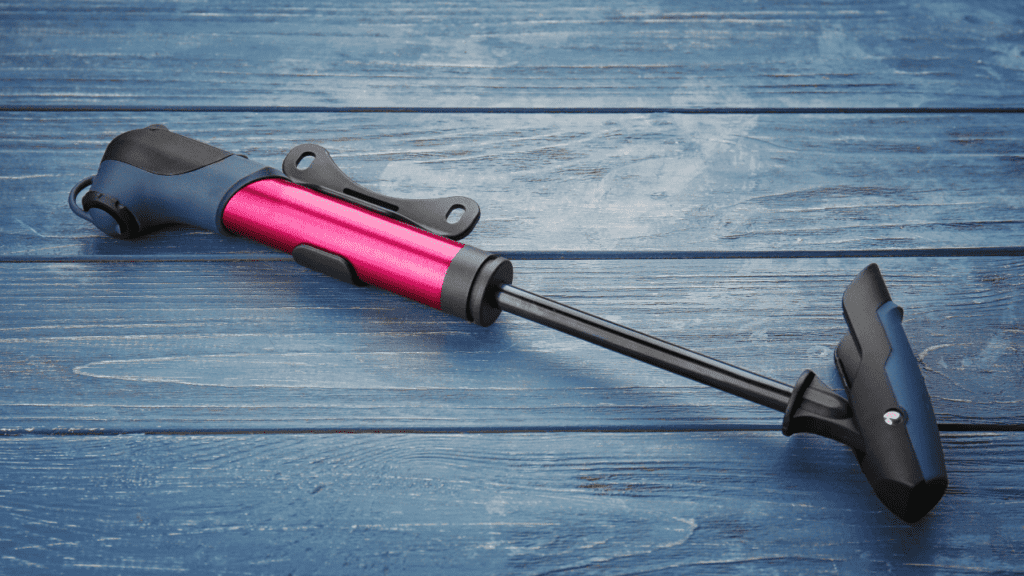A vacuum pump works to suck out air from small spaces.
This works by removing the molecules of air from the sealed volume so you will be left with a partial vacuum.
The vacuum pump has the job of generating a vacuum within a certain capacity.
Did you know you can create your very own vacuum pump from a syringe or by converting a plain bicycle pump?
Table of Contents
How To Make Homemade Vacuum Pumps?
You can make your very own vacuum pump from a bicycle pump. The process is easy, and you don’t need any extravagant tools and equipment either. You can easily make a vacuum pump by converting a regular bike pump. With a few modifications, you will have a new vacuum pump in no time.
How To Make A Vacuum Pump Using A Bicycle Pump
To do this, you first need to get a normal bicycle pump and take the top part off.
There will be screws there holding it. Some types might just have one screw.
Using a screwdriver, take the screw out and take out the inside parts of your pump gently.
When you have opened the pump and pulled the parts out, you should be able to see a rod. It will have a small disc located on the other side.
This is what creates the vacuum. Instead of blowing air into it, you actually need to pull it. When you have pulled it, the packing should be facing down and make a u shape.
This needs to be taken off by unscrewing the part at the bottom of the disc and then turning it, so you have it now facing upwards.
You can go ahead and screw the bottom back in now.
Now, if your bicycle pump doesn’t seem to have this fit-out, don’t worry! There is another way to do this.
Unscrew the disc and turn it around then, you just need to screw it back on.
If you find that the hole isn’t able to go all the way through the disc part, you can drill the hole. Just make sure that you use a drill bit that is the same size.
The next step requires you to put your rod back into the cylinder.
You can line up the disc to fit evenly into the rod.
You can put it back into the cylinder now at a 45-degree angle first, which will make it easier to go in without too much resistance from the tube.
Push it back into the cylinder but ensure you line it up straight as you are pushing it in.
Do this slowly as too much force, or the wrong angle can damage the pump and the disc.
For the next part, you need to take out the screw from the head of the tube. This is the head that normally leads to the bike tire.
You can use your fingers to follow the tube to the end and then unscrew it with your fingers.
If you find you cannot unscrew it, you can simply just cut the head off by cutting through the tubing right underneath it.
It is important to get an even cut so you can ensure it attaches to the vacuum chamber properly.
Now For The Last Step
You can attach the pump to the valve of the vacuum chamber with a hose. Once you have, it attached you just need to pull up the pump, which will create a vacuum in the chamber.
You can make the vacuum stronger by pumping it several times. There you have it, your own homemade vacuum pump.
Conclusion
A vacuum pump can be considered an air pump that is used to suck air instead of blowing it out. A homemade vacuum pump can take out 75% of air from something.
This is stronger than the pull on a vacuum cleaner.
There are many varieties of vacuum pumps, and the homemade ones work great for small jobs.
If you need more power, then you are going to need to buy a commercial vacuum pump or create one with better tools and equipment.
Powerful vacuum pumps can be created at home, but they can be costly and more complex to make.
Frequently Asked Questions About Vacuum Pumps
Is A Homemade Vacuum Pump Reliable?
A homemade vacuum pump might help you out in a pinch when you really need one, and you have a basic job to do. It is best for complex jobs to use a proper tool to ensure safety to you and others and get the job done right the first time.
How Many Types Of Vacuum Pumps Are There?
There are four types of vacuum pumps such as the rotary vane, reciprocating, dry claw, and the liquid ring. Each is used for different things.

